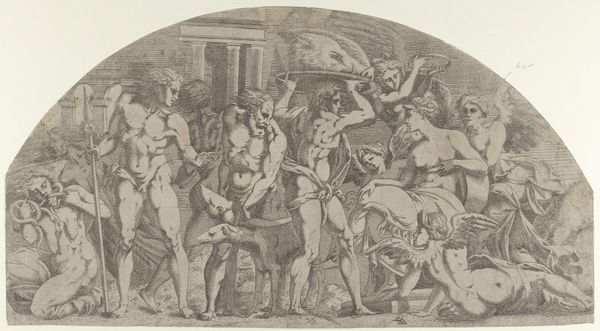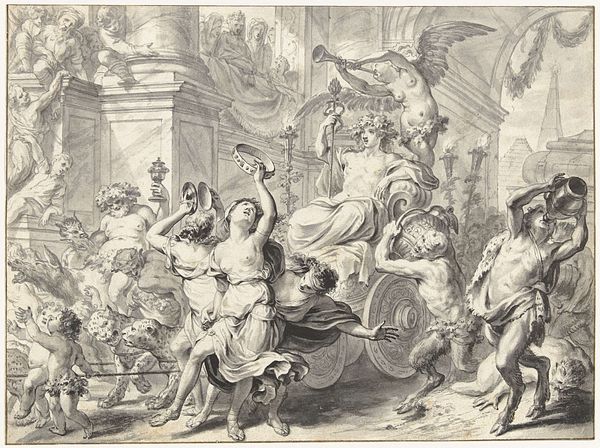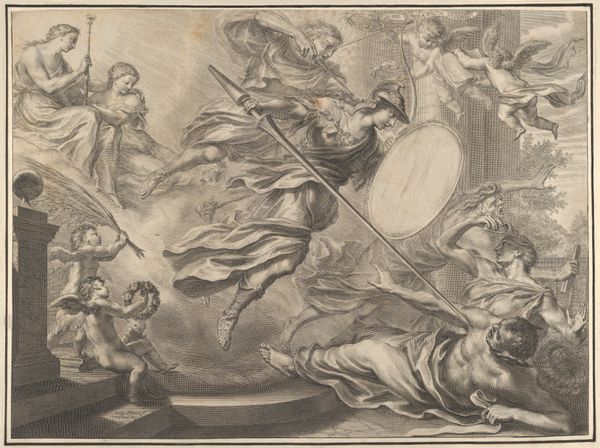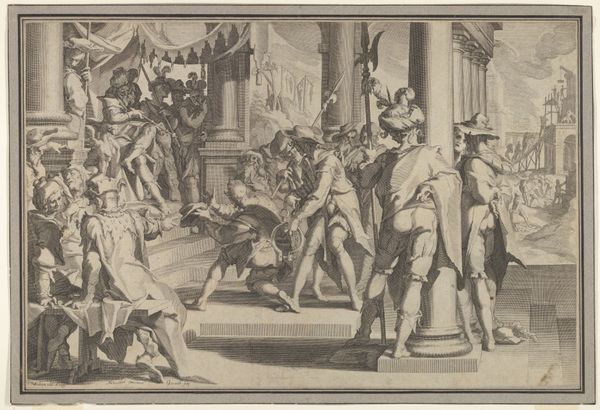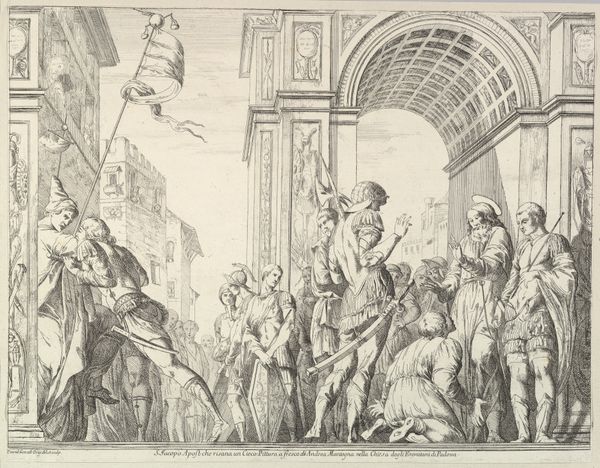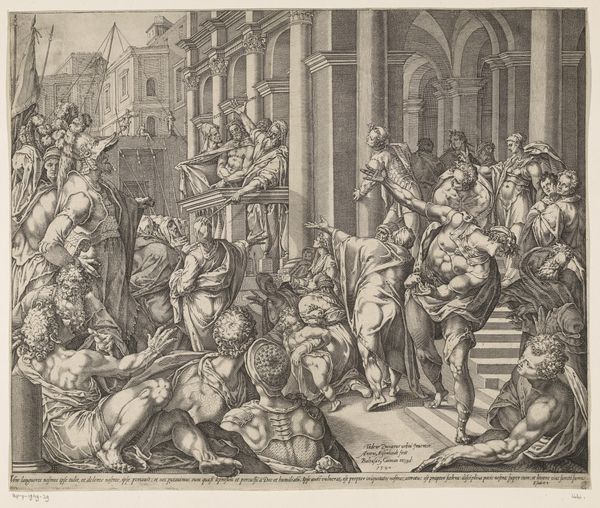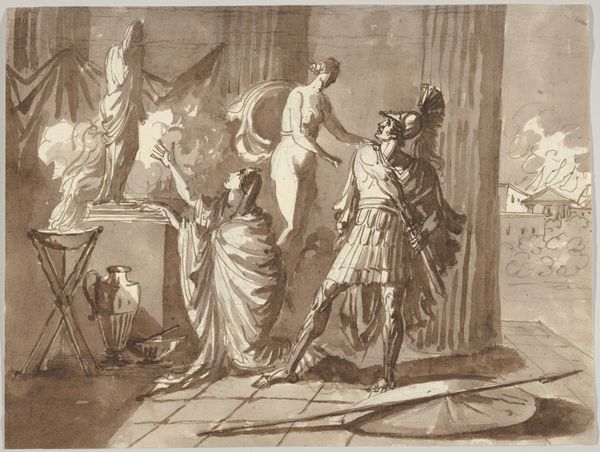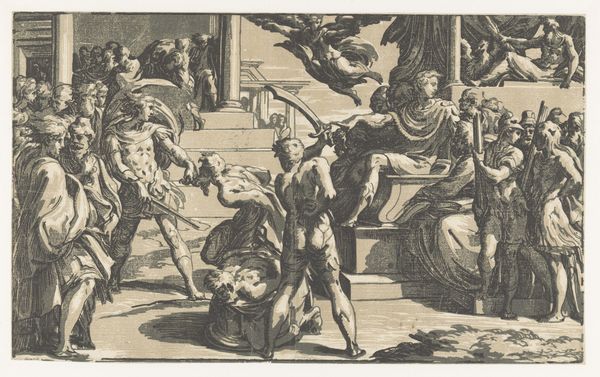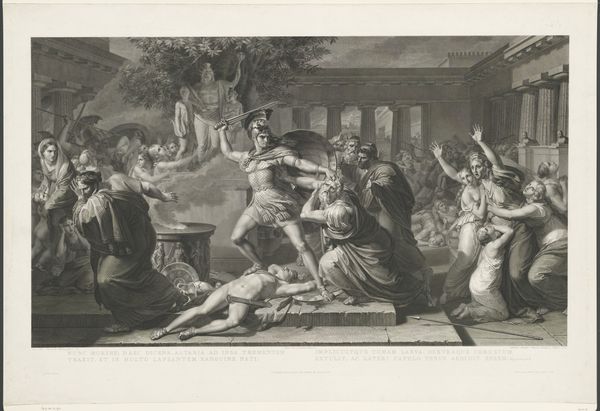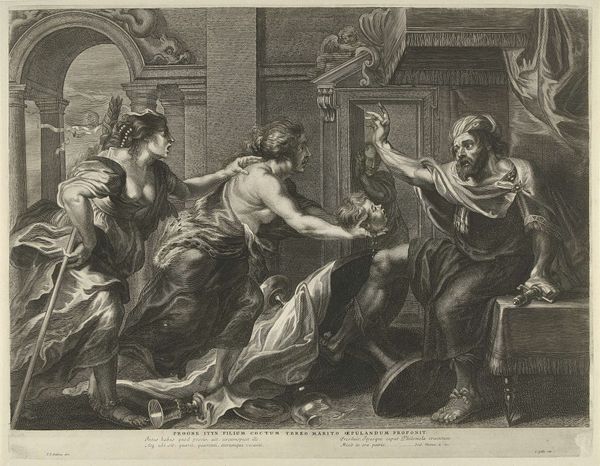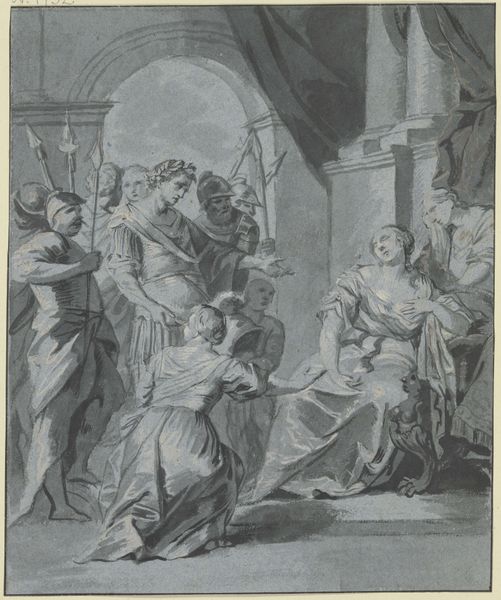
Allegorial Composition with the Coat of Arms of Cardinal Richelieu and Charity 1620 - 1650
0:00
0:00
drawing, print, engraving
#
drawing
#
allegory
#
baroque
# print
#
figuration
#
line
#
history-painting
#
engraving
Dimensions: Sheet: 15 15/16 in. × 20 in. (40.5 × 50.8 cm)
Copyright: Public Domain
Editor: Here we have Grégoire Huret's "Allegorical Composition with the Coat of Arms of Cardinal Richelieu and Charity," dating from around 1620 to 1650. It's an engraving, so it's all in line, but the figures are really dynamic, almost theatrical. What do you make of this staging? Curator: What strikes me is the very deliberate construction of Cardinal Richelieu's image, particularly the relationship between power and representation at the time. Engravings like this served as powerful propaganda tools, didn't they? It wasn't simply about showing Richelieu's face, but about building a carefully constructed narrative. Notice how Charity, along with the other figures, seem to be actively supporting and presenting his coat of arms. Editor: So it's less about the artwork itself, and more about the message it conveys about Richelieu's power? Curator: Exactly. Consider who the audience was likely to be – other members of the elite, perhaps even those who needed convincing of Richelieu's authority. How effective do you think this type of imagery would have been in shaping public perception of him? Does the artist manage to persuade, and if so, by which means? Editor: I see your point. The placement of his coat of arms makes it seem like all these virtues support him. So it isn't enough to just create an image of the Cardinal, one has to frame him as divinely or morally supported, right? It seems heavy-handed to modern eyes. Curator: It's interesting that you say that. Is that because we're now more used to veiled propaganda, and maybe less attuned to Baroque modes of political communication? The context truly shapes the viewing, even across centuries. Editor: I never considered the active role engravings played in shaping the narrative of powerful figures. This has given me a new way to appreciate the political function of art. Curator: And hopefully, a deeper understanding of how images operated as instruments of power and persuasion within specific social and historical contexts.
Comments
No comments
Be the first to comment and join the conversation on the ultimate creative platform.
